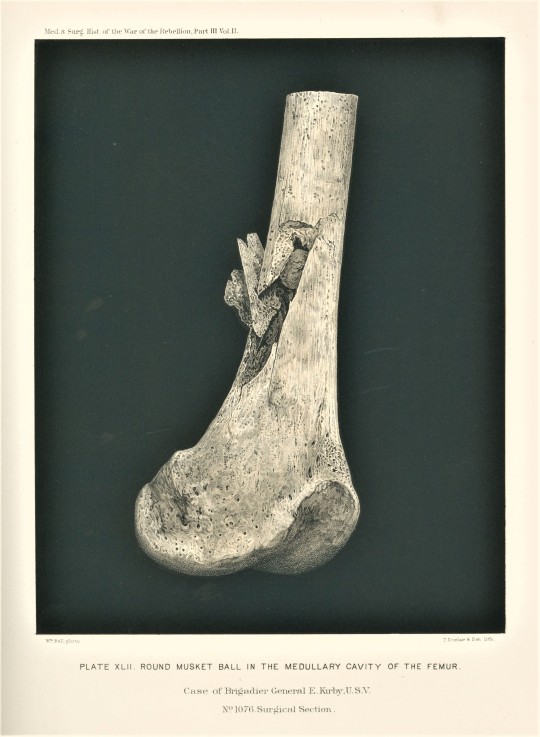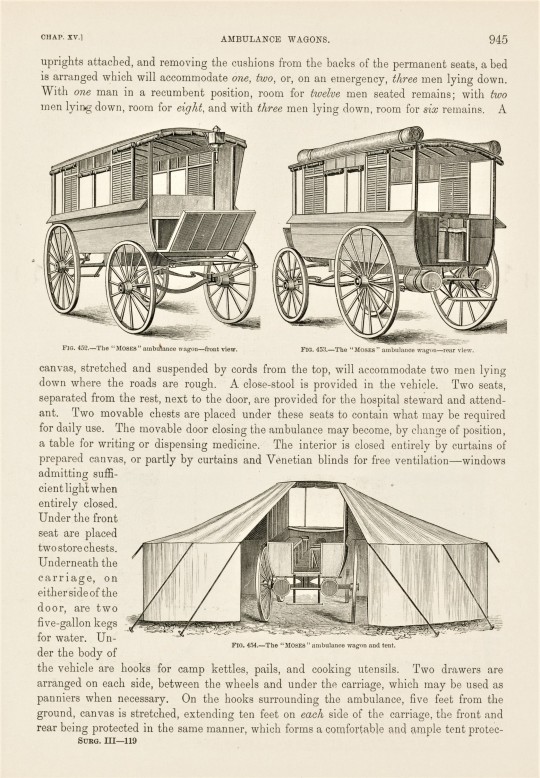#MSHWR
Photo










Science Saturday
We had a patron come in this week to do some research with the Medical and Surgical History of the War of the Rebellion (MSHWR) and we were impressed by the range of image reproduction techniques represented. The six volumes contain etchings and wood engravings, multi-colored charts and graphs, lithographs and chromolithographs, as well as multiple types of photographic reproduction (including heliotype and albumen photographs). I’ve taken the liberty of sharing some of the less gruesome images but encourage those with a morbid sense of curiosity to give us a visit and see for yourself!
Published in Washington D.C. over nearly two decades by the United States Government Printing Office (which underwent a name change 2014 to the Government Publishing Office), the MSHWR was issued in three parts, with each part consisting of a Medical and Surgical volume. Both the Medical and Surgical volumes of Part 1 were first published in 1870, with the final installment coming in 1888. Both of our Part 1 volumes are from the second printing in 1875, while the volumes from Part 2 and 3 are first printings. Production of the first five volumes was overseen by Surgeon General Joseph K Barnes. The surgical volumes were compiled by George A. Otis. The first two medical volumes were compiled by J. J. Woodward, well known internationally as a pioneer in micrography. Both Barnes and Woodward passed away before the completion of the work, and Charles Smart took over for Woodward under the direction of the new Surgeon General, John Moore.
This monumental work documents clinical records, surgical reports, case reports, and statistical reports on both battlefield injuries and camp diseases in both the Union and Confederate Army during the Civil War. The Journal of the American Medical Association (JAMA) considers it “among the most remarkable works ever composed on military medicine and surgery” and that it is likely “the country’s earliest comprehensive medical monograph.” Not only is it a leading source of medical data from the time period, but the inclusion of case studies and surgical reports, with both patient and surgeon named, has made the MSHWR an important resource for personal histories and genealogical research. As noted, the array of image reproduction techniques also make it great point of reference for those with an interest in the history of printing.
Find more Science Saturday posts here.
-Olivia, Special Collections Graduate Intern
#Science Saturday#Medical and Surgical History of the War of the Rebellion#MSHWR#Medical History#Surgical History#American Civil War#War of the Rebellion#United States Government Printing Office#Joseph Barnes#George Otis#J. J. Woodward#Charles Smart#John Moore#etching#wood engraving#lithographs#chromolithographs#Yay chromoliths!#heliotype#albumen prints#micography#olivia
39 notes
·
View notes
Photo

Gangrene following a shot; laceration of the femoral artery (J.K. Barnes, The Medical and Surgical History of the War of the Rebellion (1870-1888)
#leanne posts#photo#surgery#history#medical#mshwr#joseph k barnes#jk barnes#civil war#war of the rebellion#american civil war#gangrene#laceration#gore#blood#death#femoral artery#artery#joseph barnes#19th century#why is this so aesthetically pleasing#leg#foot#civil war source#historical source#historical book#part 3 volume 2#surgical history#blue#green
8 notes
·
View notes
Note
tag 5 from your favorite blogs wa la tgoli mshwr
@dark-knight-dummo @damn-saudi @no-type77 @nott-youurs @makaveli-6 o aktharr
4 notes
·
View notes
